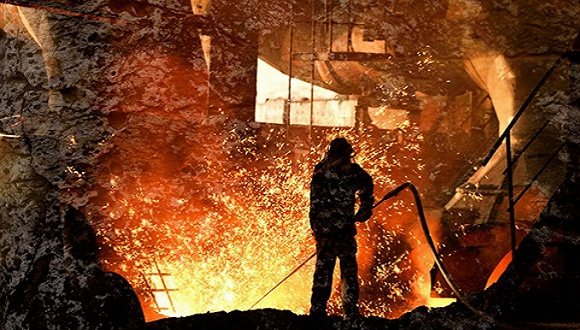Under the uncertain economic outlook of China, reform of the supply front may become a hot topic in the upcoming National People’s Congress and the Chinese Political Consultative Conference (two sessions) of 2016.

Source: Internet
On 10th November 2015, according to President Xi Jinping on the 11th meeting of Leading Group for Financial and Economic Affairs, the government would mainly focus on strengthening the reform of the supply front while reasonably expand the total demand; besides, it will also spare no effort to solve the problems of the excess—manufacturing capacity, real estate inventory, local government debt, and the high cost of the enterprises. It is the first time for the central leadership to propose the concept of the reform of the supply front.
Looking back on the rapid development of 30 years, the decision-making officials clearly understand the long-term obstacles that blocked China’s economic transition. To achieve the transition, China should improve the proportion of the consumption in economic growth and reduce the dependence on the credit and investment.
“In my point of view, the reform of the supply front aims to transfer the resources from the low efficiency areas to the high efficiency areas and from the areas of excess to the areas in need.” said Wang Yiming, the vice president of Development Research Center of the State Council.
According to a research report released by the Citic Securities (CITICS) a few days ago, the reform of the supply front would become the hottest topic of the two sessions, while the core of the reform is to reduce the capacity. The excess production capacity has become the biggest obstacle to the economic development of China.
According to a latest research report concerns China’s production overcapacity released on 22nd February by Wuttke, president of European Union Chamber of Commerce in China, the present situation of overcapacity is even worse than that in 2009.
From the report, in 2015, 50% of steel and aluminum and 57% of the cement around the world were produced by China. The cement output of 2011 and 2012 in China was equal to the total output of the 20th century in the United States.
In experts’ opinion, the overcapacity reflected the increasingly serious structural contradictions of China during the period of transition.
According to Liu Yuanchun, vice dean of the School of Economics of Renmin University of China, it is the contradiction of economic structure that constraints China’s economic development rather than the aggregate economic volume. If China insists the demand side policies, like continually expanding the investment, the utility would be diminished and the structural adjustment would also be injured.
As a matter of fact, the local governments work reports have already put forward the reform of the supply front, many of which have put the reform as the first priority in 2016 and employed a series of measures.
For example, the governor of Hebei Province Zhang Qingwei said that the key to solve the excess capacity is to dealing with the Zombie Companies; besides, it is also important to achieve the market clearing through methods of merging and reorganization, debt restructuring and the bankruptcy liquidation.
Meanwhile, Shanxi Province determined to focus on dealing with the excess capacity of the industry of coal and metallurgy by the means of merging and reorganization, the quit of decrement and replacement, and decrement, so as to solve the serious problems of the excess capacity in the coal industry through the optimizing stock.
“The reform of the supply front is a process of finding out the cause of disease and then suit the remedy to it. The situation has got so serious since the senior officials of the central government have put it into the priority in terms of the five tasks of Economic Working Conference of 2015. Dealing with the problems of the overcapacity would produce important influence to China’s economy for the period of the 13th Five Year Plan or longer.” according to the economist Song Qinghui.
According to a forward-looking report of the two sessions released in 22nd February, the tasks of the reform of the supply front are expected to be specified on the two sessions. The State Council would issue documents of the implementation, while the final result depends on the executive ability of the government.
According to the report, the State Council has released the instructional views on dealing with the overcapacity of the steel industry and the coal industry; however, the performing of reducing the capacity is worse than what the public expected, thus it is quite difficult to solve the problems of the overcapacity in China in the long term. Therefore as a result of the hard situation, observing and analyzing the subsequent government documents and the policies issued by the specific departments is necessary for forecasting the progress last four objectives.
*This article is an edited and translated version by CCM. The original article comes from Jiemian.com.
You could visit CCM PESPESTIVE for more information about China.
About CCM:
CCM is the leading market intelligence provider for China’s agriculture, chemicals, food & ingredients and life science markets. Founded in 2001, CCM offers a range of data and content solutions, from price and trade data to industry newsletters and customized market research reports. Our clients include Monsanto, DuPont, Shell, Bayer, and Syngenta.
For more information about CCM, please visit www.cnchemicals.com or get in touch with us directly by emailingecontact@cnchemicals.com or calling +86-20-37616606.